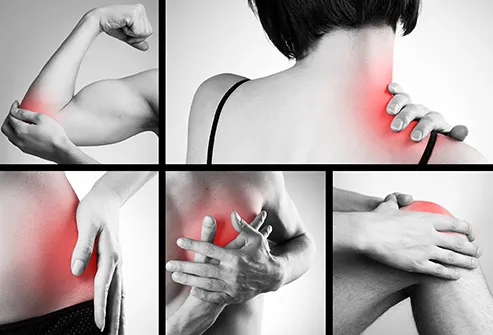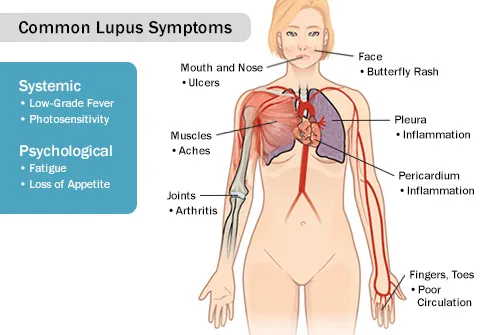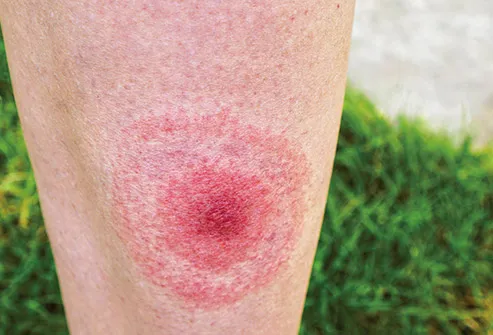Should You Worry About Your Body Aches?

Muscle pain that affects a small part of your body is usually caused by overuse -- sore arms from lifting boxes all day, for example. Or it could be a minor injury, like a bruised shoulder after a fall. But when you ache all over your body, it’s more likely caused by an infection, illness, or medicine you’ve taken.

When a flu virus hits, it brings on fever and congestion, and it can make your muscles ache, especially in your back, legs, and arms. It usually gets better on its own in a week or so, but call your doctor if it doesn’t. You also should see him if you have other health problems and you get the flu or you have a cough that doesn’t go away.

This is when your thyroid gland doesn’t make enough of certain key hormones. It can cause muscle and joint aches, as well as swelling and tenderness. It can make you tired and lead to memory problems, thinning hair, dry skin, high cholesterol, slowed heart rate, and other issues. Your doctor can do a simple blood test to find out if you have it, and if so, drugs can help replace the missing hormones.

If you have pain in your arms, legs, or both, your muscles may not be getting enough blood -- a problem called claudication. At first, you may notice it only when you exercise, but in time, you might feel it when you sit or walk. This is usually caused by a condition called arteriosclerosis, which is when there’s blockage in the tubes that carry blood to your muscles.

This is a kind of autoimmune disease -- it causes your immune system, which normally helps protect your body, to attack your tissues and organs. When lupus affects your joints or muscles, it can make them stiff, and it can hurt to move. There’s no cure, but medication and certain exercises can help control your symptoms. Talk to your doctor about what would work best for you.

This is also an autoimmune disease -- it mainly affects your joints and can lead to bone loss. It can cause pain and inflammation all over your body, and your joints may swell into odd shapes. Medication and physical therapy can help with your symptoms, but there’s no cure. In some cases, you may need surgery to repair the affected joints.

This autoimmune disease makes your muscles and joints ache and causes painful, itchy, red or purple rashes on your eyelids. It also makes spots on your knuckles, elbows, knees, and toes, can dry your skin, thin your hair, and cause swollen, irritated skin around your fingernails. It can be triggered by infection, drugs, or cancer. There’s no cure, but your doctor can help you manage your symptoms with drugs and physical therapy.

This condition can cause pain in your joints and muscles as well as problems with sleep, mood, and memory. Scientists think it happens when your brain takes normal, mild pain signals and mistakenly makes them worse. It may be triggered by illness, surgery, or severe mental stress. Medicine can ease symptoms, and exercise and relaxation techniques like yoga may help, too.

This happens when something -- possibly a virus or a problem with your immune system -- inflames muscles all over your body, especially in your belly, shoulders, upper arms, hips, and heart. Over time, your muscles can start to break down, and it might be hard to swallow or catch your breath. Your doctor may suggest drugs to ease inflammation or calm your immune system and physical therapy to help you regain muscle strength.

The main symptom of this condition is extreme tiredness (fatigue) that can’t be explained by anything else. It may get worse with exercise or mental strain, but rest doesn’t make it better. You also may have muscle pain, memory problems, sore throat, joint pain, and headaches, and you may not be able to sleep well. There’s no cure, but medication and physical therapy can help manage your symptoms.

This quickly brings pain and stiffness in your shoulders, neck, upper arms, buttocks, hips, or thighs that can be worse in the morning. You also may have fever, fatigue, weight loss, depression, and no appetite. Doctors think certain genes can make you more likely to get it. Something in the environment, like a virus, also may play a part. Steroids can ease pain and inflammation, and your symptoms may go away, but the condition can return.

Bacteria called R. rickettsii cause it, and a tick bite is usually how you get it. Most of the symptoms are flu-like -- fever, chills, headache, nausea, insomnia, and muscle aches. A rash that doesn't itch can show up on your wrists and ankles after a few days, then spread. Antibiotics treat it, and the sooner you take them, the better. If not treated, it can lead to inflammation in your lungs, heart, and brain, then kidney failure.

Bacteria from a tick bite also cause this. It can bring on fever, chills, tiredness, body aches, and a headache. Another sign is a “bull’s-eye” rash that’s clear in the middle and grows over a period of days -- it can be up to 12 inches across. The rashes -- there can be more than one -- don't necessarily show up near the bite. Lyme disease is treated with antibiotics, but some people still have aches and tiredness after finishing the drugs.

Drugs called statins are used to control high cholesterol, and about 30% of people who take them say they have muscle pain. If this is happening with you, talk to your doctor. She may be able to give you a different medication.